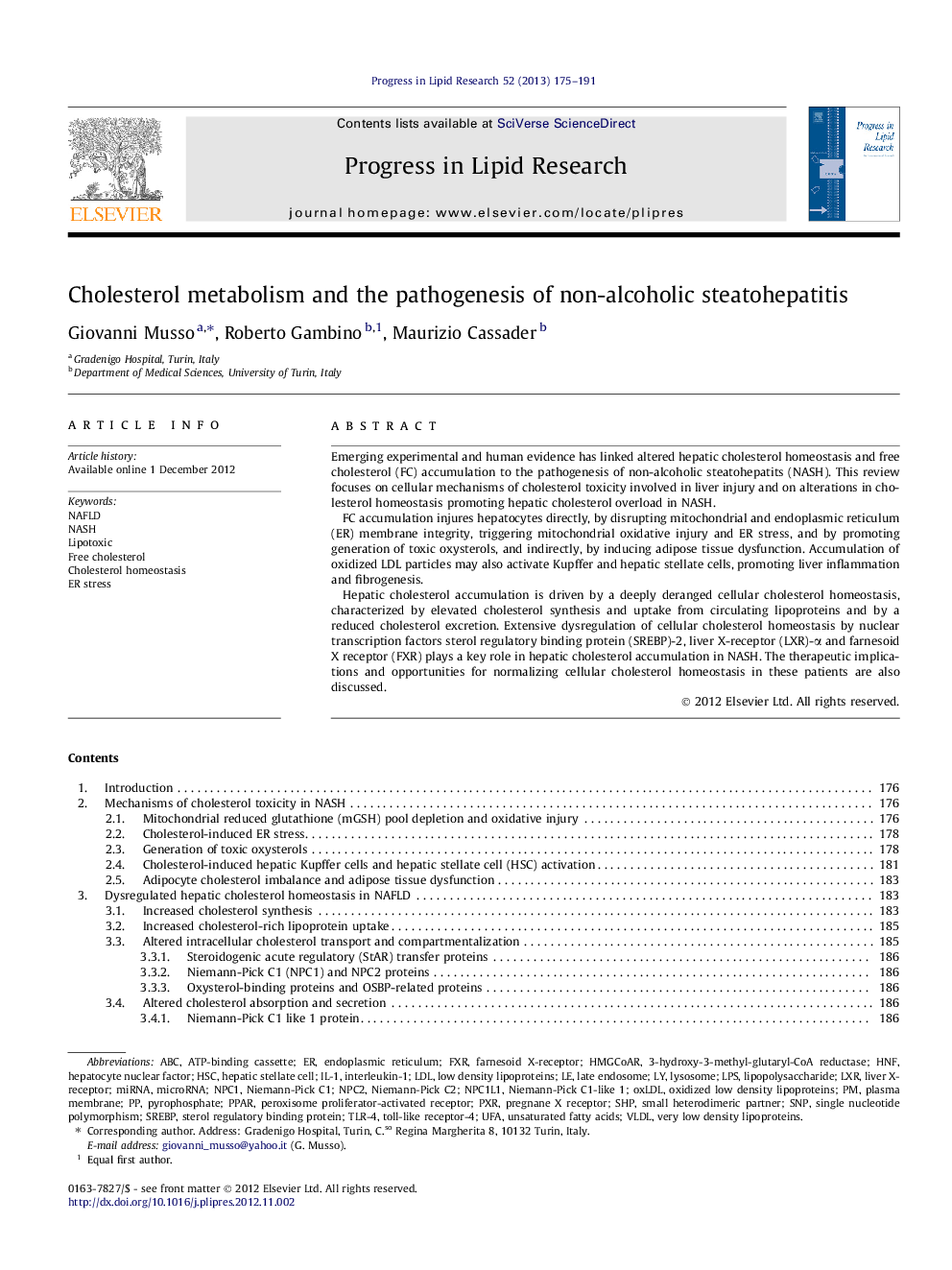| کد مقاله | کد نشریه | سال انتشار | مقاله انگلیسی | نسخه تمام متن |
|---|---|---|---|---|
| 2019184 | 1068560 | 2013 | 17 صفحه PDF | دانلود رایگان |

Emerging experimental and human evidence has linked altered hepatic cholesterol homeostasis and free cholesterol (FC) accumulation to the pathogenesis of non-alcoholic steatohepatits (NASH). This review focuses on cellular mechanisms of cholesterol toxicity involved in liver injury and on alterations in cholesterol homeostasis promoting hepatic cholesterol overload in NASH.FC accumulation injures hepatocytes directly, by disrupting mitochondrial and endoplasmic reticulum (ER) membrane integrity, triggering mitochondrial oxidative injury and ER stress, and by promoting generation of toxic oxysterols, and indirectly, by inducing adipose tissue dysfunction. Accumulation of oxidized LDL particles may also activate Kupffer and hepatic stellate cells, promoting liver inflammation and fibrogenesis.Hepatic cholesterol accumulation is driven by a deeply deranged cellular cholesterol homeostasis, characterized by elevated cholesterol synthesis and uptake from circulating lipoproteins and by a reduced cholesterol excretion. Extensive dysregulation of cellular cholesterol homeostasis by nuclear transcription factors sterol regulatory binding protein (SREBP)-2, liver X-receptor (LXR)-α and farnesoid X receptor (FXR) plays a key role in hepatic cholesterol accumulation in NASH. The therapeutic implications and opportunities for normalizing cellular cholesterol homeostasis in these patients are also discussed.
Journal: Progress in Lipid Research - Volume 52, Issue 1, January 2013, Pages 175–191